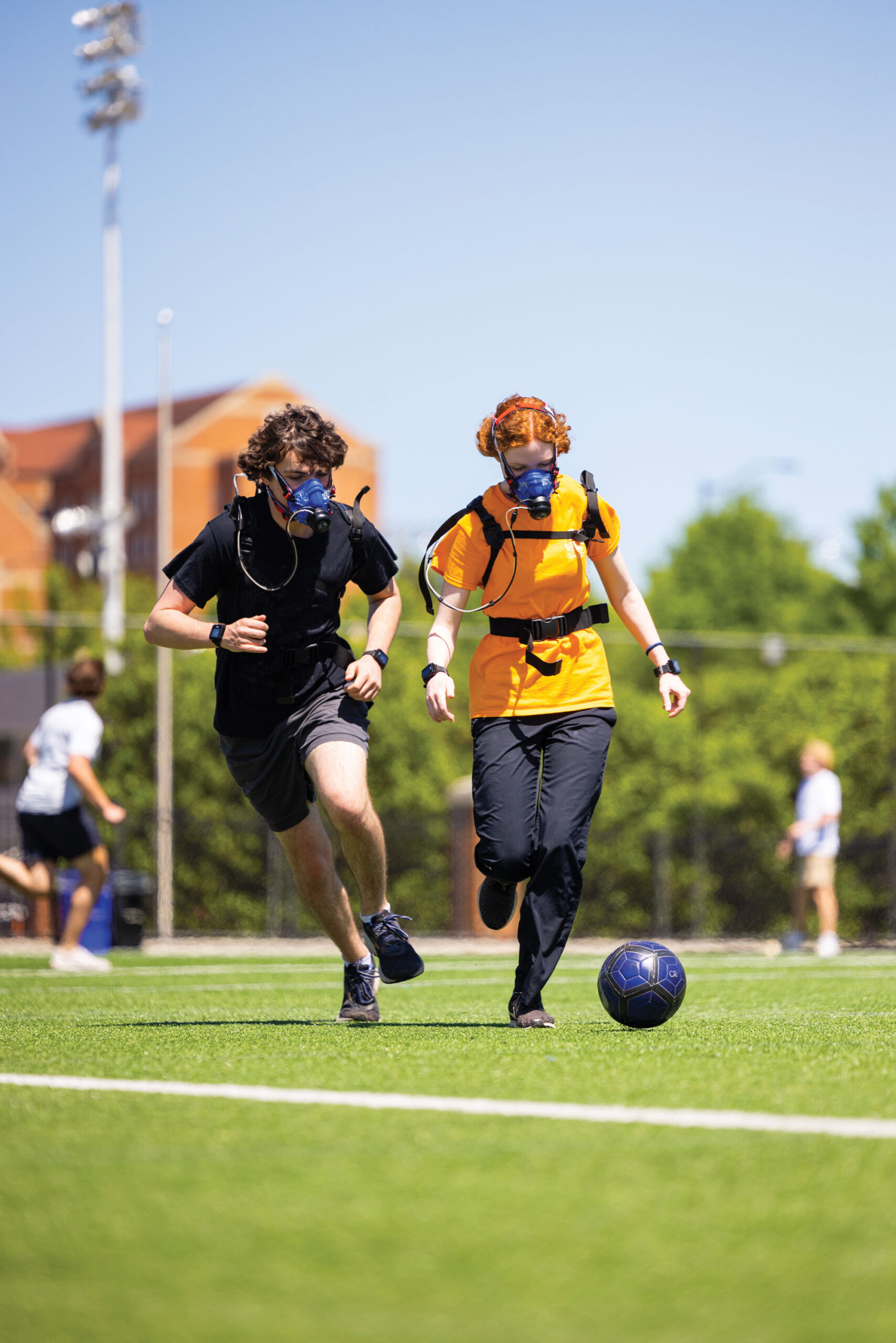by Leah Powell
Health and movement tracking has come a long way from the pedometers people once wore on their hips to count their steps. Contemporary fitness trackers like Apple Watches, FitBits, and Oura rings can be seen everywhere. With fitness trackers’ ability to count steps, record workouts, monitor heart rates, and even provide insight on users’ sleep, it’s no wonder they are so popular, but now health tracking can do more than provide casual insight to a person’s exercise.
Scott Crouter, associate professor of exercise physiology in the Department of Kinesiology, Recreation, and Sport Studies, recently received National Institutes of Health funding to explore how different sensors can be used to track physical activity and other components of health.
Most popular health and fitness trackers utilize accelerometer sensors, but uses of additional sensors, such as gyroscopes, can help capture additional information that can play an integral role in monitoring and analyzing healthcare patients’ overall physical activity and how it relates to their medical care, as well as other elements of patient health, such as body temperature or falls.
Crouter says, “Wearable sensors, such as accelerometer-based devices, are the primary method for assessing physical activity levels in free-living individuals,” but for wearable devices to truly be beneficial for health tracking insights in patients, they need to track additional movement patterns that go beyond what an accelerometer sensor can track.
Currently, the practice for tracking patient physical activity “involves using accelerometer-based devices, which are generally better for predicting outcomes at the group level rather than the individual level. A ceiling effect has been reached for individual-level accelerometer-derived predictions which can be off by more than 50 percent. Thus there is a critical need for other approaches that can yield more accurate and precise methods to classify [physical activity] type and estimate [energy expenditure].”
Crouter and his collaborators are investigating novel approaches using machine-learning algorithms with gyroscope sensors, in addition to the traditional accelerometer sensors used. These approaches can be used for health insight at the individual (rather than group) level, and this research could have multiple practical uses for health care and medical patients.
“There is a critical need for more accurate and precise methods to classify [physical activity] type and estimate [energy expenditure] at the individual level as we move towards using [physical activity] as a marker in individual health records and tracking changes in health outcomes during clinical and behavioral trials,” Crouter writes.
The gyroscopic sensor provides important additional information on angular velocity, such as turning movements during household chores at the waist or arms, that are typically performed throughout the day. This provides a more complete look at individual physical activity, and the devices can also capture moves “that occur during sedentary, light, and intermittent activities that require additional sensors to fully capture.”
For example, if a free-living cancer patient is going through radiation and their doctor needs to track the patient’s level of physical activity to understand how the radiation treatment affects their energy levels or bodily movement, an accelerometer tracker (such as an Apple Watch) would not capture all of the patient’s movement or physical activity.
While an accelerometer device would capture a patient’s steps from walks or runs, it would not capture the movement of a patient turning their arm or twisting their waist, which should be recorded to fully capture the patient’s physical activity. By combining accelerometer and gyroscope sensors for movement tracking, health care providers can glean a clearer picture of their patient’s overall physical activity, which can help inform the patient’s care plan.
Much as many individuals have a smart home that can alert users of emergencies like break-ins or carbon monoxide release, as technology and medical care progress, it is possible that wearable sensors can alert users of medical emergencies. Health-tracking devices that capture more than acceleration will be important elements in capturing overall health. These types of devices could capture an emergency situation, such as a fall or a high body temperature, and would be connected to a central hub allowing not only for a doctor to have a more complete picture of an individual’s health but also for integration into care response services— connecting to family and friends, which improves response during emergencies.
Gyroscope sensors are already in many devices used daily, such as cell phones, and could be integrated into devices like pedometers, FitBits, or Apple Watches. Crouter’s research currently uses devices that have both accelerometer and gyroscope sensors, and “with improvements in technology, the use of multiple sensors in the same device is now more feasible,” meaning
individuals could one day only need one device to track all their movement, which holds promise for improving individual-level estimates of physical activity. Having multiple types of sensors in one wearable device would also help in capturing other elements of health and medical care, as users could rely on one centrally connected device to track, capture, and alert others of medical emergencies, providing simpler health management.

